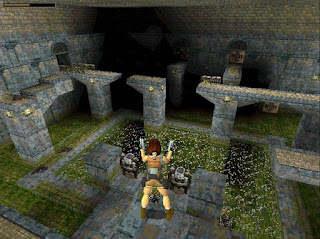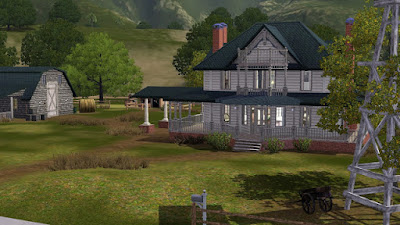Assignment One: Understanding the theory and
Applications of 3D Modelling.
Analysing A 3D Model
Tomb
Raider (Franchise):
Lara
Croft has changed a lot over the years that she has been portrayed in various
'Tomb Raider' games. She began as a very pointy and edgy model, which has since
evolved into a smooth and clean design. Below is the evolution of Lara Croft’s
3D Modelled face.
As
each game, as well as time, has passed the software has improved and improved
resulting in a cleaner and more detailed model.
You can
tell a vast difference from the first to the last model, this may be down to
software and technology updates however there is far more detail in the latter
versions. Something that I should point out is, after the first six games Crystal Dynamics took over development
from Core Design and proceeding onto
making the latest five games. Crystal Dynamics took over development of The Tomb Raider games in 2006.
Lara Croft (Tomb Raider, 1996)
In 1996
the first Lara Croft game was released. It goes without saying that in the last
nineteen years technology and the software available has changed significantly.
In the
illustrative example you can see how rigid and straight the edges of the model
are. This particular model lacks structure and detail. It isn’t completely
clear which software was used to create the 3D models, however some of the most
common used software in the gaming industry are 3D Studio Max, Maya and Cinema
4D. It is more likely to be one of the first two that created this model.
This
particular version of Lara Croft was designed by Toby Gard, who at the time
worked for Core Design before his departure in 1997.
Gard
said his vision was to create "a female character who was a
heroine, you know, cool, collected, in control, that sort of thing" and
that "it was never the intention to create some kind of 'Page 3' girl to
star in Tomb Raider"
The
Model as a whole is well constructed for the software available at the time,
but if this were to be placed into a modern day game it would be very dated and
below par. Looking at the model animated by watching some game play, you can see
that the polygons are very square and manipulated. This however doesn't affect
the movement within
the game play.
Looking
at the models chest you can see a very square polygon that seems to have been
rotated to an angle that creates the appearance of a woman’s chest. The
polygons have many lines and limited curves, giving the straight and ridged
appearance.
To the right you can see
the mesh for one of the original Lara Croft models. As I keep mentioning, you
can see how square each polygon looks. It seems that Gard used a box modelling
method as opposed to extrusion modelling. Box
modelling is where you take a standard shaped polygon, a cube for example, and
manipulate the shape into an object, you can see limited detail within the
wire frame, however it seems more likely to have been box modelled and not
extrusion modelled. Extrusion Modelling is very similar to box
modelling, but more intricate. Extrusion modelling is more apparent in more
recent versions of Lara Croft. It is quite clear that during the creation Toby
Gard used common primitives, such as cubes and cylinders to get the shape of
the model.

Looking
at the mesh above I get the impression that the model has a low polygon count,
this is due to lack of curves within the model. The environments within this
game seem to be very detailed, like the model of Lara they are also very
square. However, they fit the style of the game and pose a high level of detail
for the low resolution of game that has been produced. Again, it seems as
though the objects within the scene to the left are also box modelled. Some
elements seem more detailed and there might have been some extrusion modelling
within the more intricate platforms and surfaces.
Lara
Croft (Tomb Raider Legend, 2006)
 Ten years later and a move to a new development
company, there was a big change in the appearance of Lara Croft.
Ten years later and a move to a new development
company, there was a big change in the appearance of Lara Croft.
Doug
Church was the designer responsible for creating this version of such a now
iconic character within the gaming industry. Church worked for Crystal
Dynamics, who took over the development of the Tomb Raider franchise in 2006
and still to this day have full control over the producing of the games.
On the
right you can see that compared to the previous (1996) version, the detail is
far more apparent.
As well
as the polygons
being a lot rounder and free flowing. This would lead me to the impression that
more extrusion modelling was used for this game. To the left is the 3D Model in
more detail, most likely created using Maya.
You can see the final version, the
wire frame version, a close up on the torso as well as the wire framed head.
Within this example you can see that far more detail has been put into every
aspect of the model. The face mainly has had a vast improvement. The level of
detail in the face is pixel perfect, the face would most definitely have been
sculpted using extrusion modelling methods. Taking focus onto the torso, the
detail within the chest area is far more intricate, rather than a rotated cubed
polygon, the designer has manipulated the cube and sculpted it into a more
realistic vision of a woman’s chest region.
 The environments are a lot clearer
and detailed also. You can see the level of detail sculpted into each object,
most noticeably the bricks. For this environment I would say that again, there
was a mixture of box and extrusion modelling as well as a lot of texturing.
The environments are a lot clearer
and detailed also. You can see the level of detail sculpted into each object,
most noticeably the bricks. For this environment I would say that again, there
was a mixture of box and extrusion modelling as well as a lot of texturing.
In the
image to the right you can also get an angle on how the characters are animated
within this game.
The
animation is a lot smoother and allows the character to move around the virtual
world with a lot more ease. Compared to the 1996 version, the animation is a
vast improvement. Both versions work smoothly and well, although Tomb Raider
Legend, being a more modern game, moves with more freedom and flexibility.
Lara Croft (Tomb Raider, 2013)
Still
being developed by Crystal Dynamics they decided to change the entire face of
the game. Darrell Gallagher, the head of Crystal Dynamic Studios said: "Forget everything you knew
about Tomb
Raider, this is an origins story that creates Lara Croft
and takes her on a character defining journey like no other".
With this being said you can
notice a drastic change in Lara’s appearance. Again, compared to the previous
model I analysed you can see that the level of detail has significantly
improved. Now if you compare the version of Lara on the left to the 1996,
original, version then you can see the detail has dramatically improved.
You can compare the level of
detail in the very first illustrative example.
I wasn’t able to find a wire frame example
of the latest version of Lara, however on the right there is four different
views of the model.
There is a view of each angle,
front, back and both right and left sides.
Even without a wire frame I can
tell that this particular model was made almost entirely from extrusion
modelling. There is far too much detail for the basis of this to be made using
box modelling only. However they may have used box modelling in some aspects.
With the detail being extremely
more significant the animation alongside it is also very well implemented and
portrayed into the game play.
 In terms of the environment you
can also see a high level of improvement in the detail. On the left you can see
the elements of the background behind the cliff face. This is a high level of detail,
even with being far away from that point of the world you can still see the
detail of it. This doesn’t replace the detail of closer range. The mountain
face has a very high level of detail with all of the creases and moss. You can
also see the lighting and shadowing on the edge of the mountains and behind the
trees.
In terms of the environment you
can also see a high level of improvement in the detail. On the left you can see
the elements of the background behind the cliff face. This is a high level of detail,
even with being far away from that point of the world you can still see the
detail of it. This doesn’t replace the detail of closer range. The mountain
face has a very high level of detail with all of the creases and moss. You can
also see the lighting and shadowing on the edge of the mountains and behind the
trees.





















